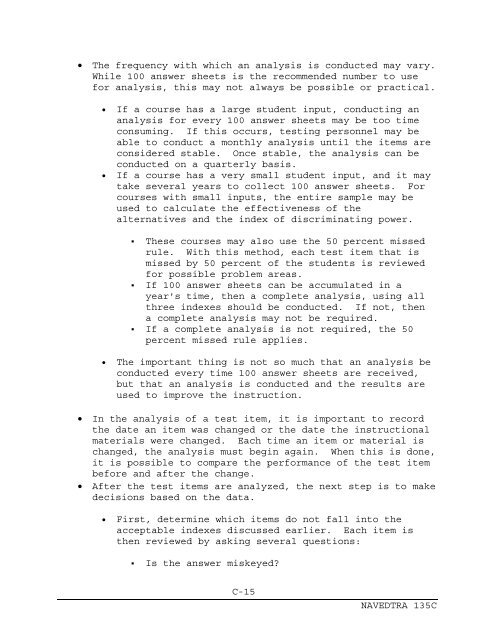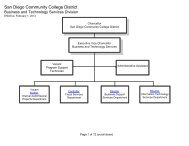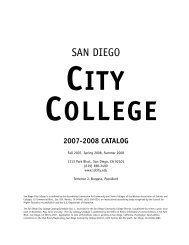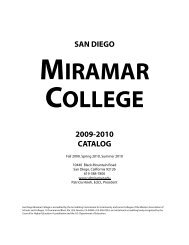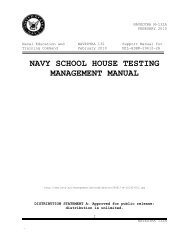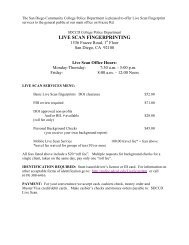NAVY SCHOOL MANAGEMENT MANUAL
NAVY SCHOOL MANAGEMENT MANUAL - AIM
NAVY SCHOOL MANAGEMENT MANUAL - AIM
- No tags were found...
You also want an ePaper? Increase the reach of your titles
YUMPU automatically turns print PDFs into web optimized ePapers that Google loves.
The frequency with which an analysis is conducted may vary.<br />
While 100 answer sheets is the recommended number to use<br />
for analysis, this may not always be possible or practical.<br />
<br />
<br />
If a course has a large student input, conducting an<br />
analysis for every 100 answer sheets may be too time<br />
consuming. If this occurs, testing personnel may be<br />
able to conduct a monthly analysis until the items are<br />
considered stable. Once stable, the analysis can be<br />
conducted on a quarterly basis.<br />
If a course has a very small student input, and it may<br />
take several years to collect 100 answer sheets. For<br />
courses with small inputs, the entire sample may be<br />
used to calculate the effectiveness of the<br />
alternatives and the index of discriminating power.<br />
• These courses may also use the 50 percent missed<br />
rule. With this method, each test item that is<br />
missed by 50 percent of the students is reviewed<br />
for possible problem areas.<br />
• If 100 answer sheets can be accumulated in a<br />
year's time, then a complete analysis, using all<br />
three indexes should be conducted. If not, then<br />
a complete analysis may not be required.<br />
• If a complete analysis is not required, the 50<br />
percent missed rule applies.<br />
<br />
The important thing is not so much that an analysis be<br />
conducted every time 100 answer sheets are received,<br />
but that an analysis is conducted and the results are<br />
used to improve the instruction.<br />
<br />
<br />
In the analysis of a test item, it is important to record<br />
the date an item was changed or the date the instructional<br />
materials were changed. Each time an item or material is<br />
changed, the analysis must begin again. When this is done,<br />
it is possible to compare the performance of the test item<br />
before and after the change.<br />
After the test items are analyzed, the next step is to make<br />
decisions based on the data.<br />
<br />
First, determine which items do not fall into the<br />
acceptable indexes discussed earlier. Each item is<br />
then reviewed by asking several questions:<br />
• Is the answer miskeyed?<br />
C-15<br />
NAVEDTRA 135C


